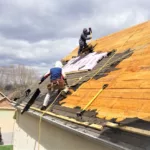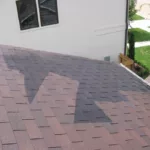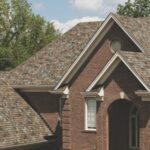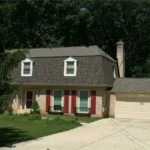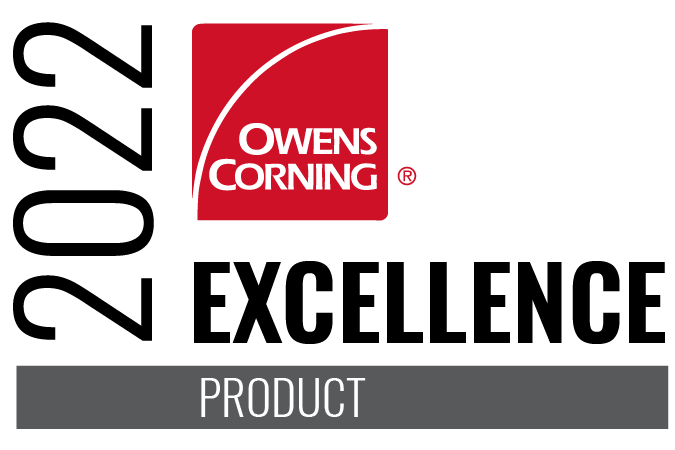Although Winter Solstice has just passed, it is safe to say it has felt like winter for a while now! With snow, high winds and chilling temperatures, everyone is cranking the heat up this season. If you are considering replacing your siding, a material we recommend is insulated vinyl. It is an upgrade from conventional siding because of all the benefits it will have on your home – and your pocket!
WHAT IS INSULATED VINYL SIDING?
For those worried about regulating the temperature in your homes during the winter season, insulated vinyl might be something you want to consider. Insulated vinyl siding is standard vinyl siding that has a solid foam backer for insulation. By filling the voids behind the siding’s stepped profile, the insulation makes the complete material stiffer and more resistant to warping and movement than conventional vinyl siding. There is a lot more value in insulated vinyl siding opposed to the regular vinyl siding, but it does come at a premium price. We will lay out everything you need to know while weighing out these options for your home and family.
|
Adding new siding to your home is a big investment most people will only have to do once or twice in their lifetime. Because of this, it’s important be well-informed so you are able to decide if an upgraded product, such as insulated vinyl, would be worth it!
R-VALUE
When reading more into the benefits of insulated vinyl siding, a term that is most frequently used to prove it’s benefits is R-Value, an objective measure of insulation’s performance. The term R-value was developed to represent the ability of an insulation material to restrict heat flow. The R-factor of a material is determined in a laboratory by placing a test specimen of the material between two plates and measuring the heat flow through it. Typically, the sample consists of one square foot of material and has a thickness of exactly 1 inch, and its two surfaces have a temperature difference of 1 degree F. During this test, the thermal conductivity of the material is determined, which is expressed as the rate of heat flow in British thermal units (BTUs) per hour. The product’s R-value, then, is determined by multiplying its R-factor by the thickness of the product used. The higher the R-value of the product, the better the insulation.
Understanding R-Value is another tool in helping to decide if insulation vinyl siding will be best for you.
Let’s break down the comparison between insulated vinyl and conventional vinyl siding based on durability, energy efficiency, and cost.
DURABILITY
Conventional vinyl has a reputation for not being the most durable siding option. The main difference between the two types of vinyl is the foam backer on the insulated siding. Conventional vinyl siding is hollow, making it more susceptible to damage. Things such as warping, cracking and fading are common issues with conventional vinyl’s durability. It is also easily damaged due to impact- if you look around your neighborhood you will see this among regular vinyl. However there are some benefits, conventional vinyl is low maintenance and has a long-lasting life for the price point which is an appealing point while making the choice of which siding is right for your home.
Insulated vinyl, however, was made to fix these kinks. As mentioned before, where the conventional vinyl is hollow, the insulated vinyl has a foam backing contoured into the panel. This improves it’s durability and it’s impact resistance. Another important feature is the foam component of insulated vinyl siding features a built-in insecticide which is safe for people and pets, but protects the foam from termite damage. If your home has any termites burrowing into the foam looking for shelter, they will be killed by trying to bite the foam. The foam insulation and vinyl siding are permanently adhered together, creating one complete, durable panel.
WINNER: INSULATED VINYL
ENERGY EFFICIENCY
One of the main reasons to install insulated vinyl siding over conventional vinyl siding is for energy efficiency. The insulation is designed for this purpose: to regulate the temperature inside your house and to help reduce the cost of utility bills. Adding insulated vinyl will provide monetary savings and overall make your home more comfortable. In the winter, it will keep the heat inside the home and in the summer it keeps the heat outside- it is a layer of protection that will save you money no matter what the season!
WINNER: INSULATED VINYL
COST
Cost of siding can depend on many factors, such as the size and location of your house and the appearance choices you decide on. Insulated vinyl is more expensive than conventional vinyl for many reasons. The materials in insulated vinyl are bulkier and provide extra steps during installation. They also offer more of a variety of premium colors and profiles, which makes the exterior of your home beautiful, but will come out to a higher price point. Both types of vinyl are the most low maintenance siding products on the market, opposed to wood and cement which require more upkeep during it’s lifetime. Insulated vinyl costs more than non-insulated for initial costs, however over time will save you money in other ways such as your energy bills and cost of repair for impact damages.
WINNER: CONVENTIONAL VINYL (INITIALLY), INSULATED VINYL (LIFETIME)
If you are interested in insulated vinyl siding, let us help! As an A+ BBB Accredited Business with a 4.9 Star Google Rating, we take immense pride in the quality of our work and relationships with our customers. We would be happy to serve you and your family!


